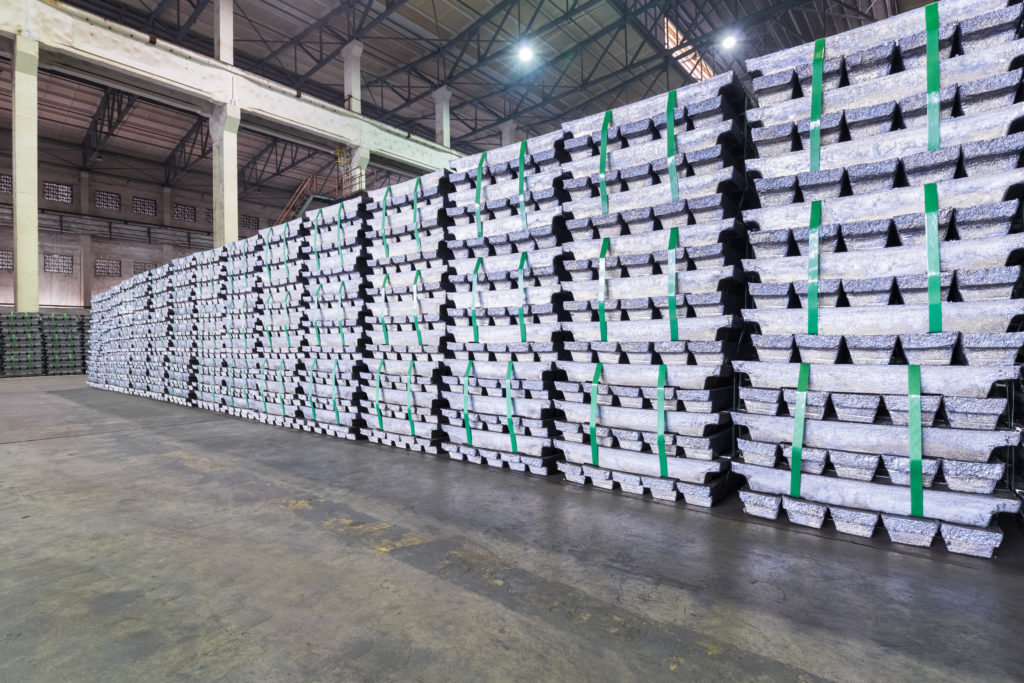Column: China imports record amount of lead after Shanghai squeeze

China’s imports of refined lead surged in August with the country set to be a net importer of the battery metal for the first time since 2020.
The sudden shift in trade patterns results from a squeeze on the Shanghai Futures Exchange (ShFE) lead contract in July.
A shortage of deliverable metal in the mainland market led to a scramble for Western lead and simultaneously opened up an import arbitrage window with the London Metal Exchange (LME).
China’s resurgent import appetite has halted a long-running build in LME inventory.
A redistribution of global lead stocks is clearly underway. The question is whether this is a flash event or the start of a more structural change in east-west trade flows.

Shanghai shorts
China imported just 540 metric tons of lead in the first half of 2024 but volumes leapt to 14,000 tons in July and an unprecedented 53,000 tons in August.
It’s possible that the record inflows in August included some Chinese metal that had been sitting in bonded warehouses and re-directed to the domestic market. That in itself would be a highly unusual phenomenon.
The trigger for the change in Chinese trade flows was a July squeeze on the ShFE lead contract which was the climax of a long-running battle between Shanghai bulls and bears.
Tightness in the front part of the forward curve was exacerbated by extremely low exchange stocks as on-warrant ShFE inventory fell below 10,000 tons in August.
Moreover, short-sellers looking to deliver physical metal against their positions struggled to find the right lead after the ShFE tightened its bismuth impurity threshold in April. Multiple deliveries were rejected by exchange officials, forcing shorts to look overseas.
Fortunately for them, there is no shortage of lead outside of China.
LME stocks of registered and off-warrant lead rose every month between February 2023 and July 2024, when they peaked at a combined 350,000 tons.
The uptrend reversed in August, when combined inventory fell by 57,000 tons as metal was diverted to China.

Squeeze over?
The time-spread tightness on the ShFE lead market has dissipated, the hefty front-month premium switching to a discount in the middle of September.
That has made imports less attractive, which should lead to a tail-off in inbound volumes after pre-booked shipments show up in the next few months’ customs figures.
However, there has been no sustained rebuild in Shanghai exchange inventory. On-warrant stocks rose to 54,500 tons mid-September but have since slid back to 34,760 tons.
Total ShFE deliverable stocks closed last week at 44,566 tons, still much lower than LME registered stocks of 194,300 tons.
The continued east-west stocks imbalance leaves the Shanghai market vulnerable to renewed tightness, particularly if there is a resumption of bull-bear hostilities.
Battery scrap shortage
Although China’s shift from net exporter to net importer has been triggered by a squeeze on the futures market, it is rooted in physical market dynamics.
The world’s largest producer of refined lead has seen output decline this year with both primary and secondary operators experiencing tight availability of feed.
Imports of lead concentrates were down by 9.2% over the first eight months of 2024 and primary smelter output fell by 4.5% over the January-September period, according to local data provider Shanghai Metal Market (SMM).
The secondary sector, which processes refined lead from battery scrap, has fared even worse with output down by 34.4% year-on-year in September, according to SMM.
The problem is a lack of battery scrap due both to a mild 2023-2024 winter, meaning less battery failure, and changes to local government incentive schemes, according to analysts at Macquarie.
Prices for battery scrap are higher than for primary metal in parts of the Chinese market, compressing margins for many smelters, SMM reports.
China doesn’t allow imports of scrap lead, meaning the supply stress has moved to the primary metal segment of the supply chain.

Global surplus
Falling Chinese production is the main reason the International Lead and Zinc Study Group forecast global output of refined lead to fall by 0.2% this year at the organization’s biennial meeting in September.
The group still expects a global supply surplus of 63,000 tons this year following on a 106,000-ton surplus in 2023.
However, that’s a marginal number in a 13-million ton market and a forecast that is highly dependent on whether Chinese lead production can recover over the balance of the year.
Moreover, the global picture is currently masking a strong divergence between China and the rest of the world. The burst of imports over July and August hasn’t fully resolved that gap.
(The opinions expressed here are those of the author, Andy Home, a columnist for Reuters.)
(Editing by David Evans)
{{ commodity.name }}
{{ post.title }}
{{ post.date }}

Comments